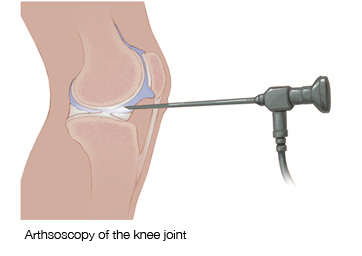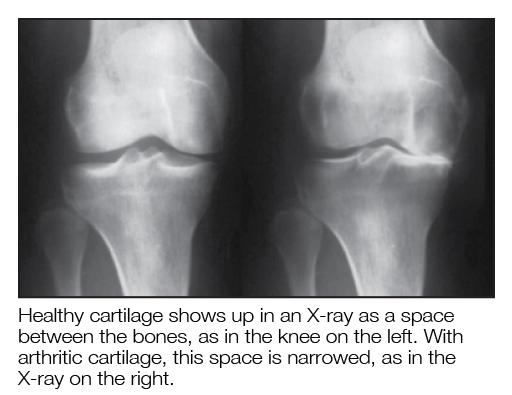Can exercise be helpful for knee arthritis?
Yes. Exercises to stretch and strengthen the quadriceps muscles and hamstrings are helpful in reducing the pain of arthritis. Stronger muscles and weight loss will decrease the mechanical loading of the knee joint, resulting in pain relief.
Walking, swimming, light aerobics, elliptical exercisers, and other related activities can be very useful. In some patients, a physical therapist can help design an exercise program to help an arthritic knee. Any exercise is far better than no exercise. Exercise will not make arthritis worse, and will not accelerate the wear and tear in the knee.
Does weight loss help with knee arthritis?
Yes. Excess body weight is multiplied across the knee joint. Thus, gaining 10 pounds of body weight can lead to a 30-pound load on the kneecap, making getting up, climbing stairs, and squatting very difficult.
Losing weight takes load off the cartilage, and decreases the burden on your knees. Weight loss also makes surgery safer. Generally speaking, weight loss and the maintenance of proper body weight can help reduce the pain of knee arthritis.
Does using a cane help with knee arthritis?
Yes, it does. Similarly, using a walker or other assistive device can help by off-loading the knee joint and reducing the tendency to limp. Most people would rather not use a cane, but using one will help with the pain of an arthritic knee.
Will a brace help with knee arthritis?
It depends. Over-the-counter knee braces can be very effective at controlling pain and giving you more confidence and balance in the knee. More expensive custom braces are rarely necessary. Wrapping the knee with an elastic bandage can also relieve arthritic pain.
What other non-surgical steps can I take to relieve pain of knee arthritis?
When possible, avoid stairs and concrete floors, lifting weight, deep bending, twisting activities such as golf, and repetitive impact such as jogging. These are all reasonable, non-surgical options that people use to relieve the pain of an arthritic knee until they are ready for surgery.
Will alternative therapies like supplements and acupuncture help?
Some patients find relief by using over-the-counter remedies like glucosamine, vitamins, oils, shark cartilage, herbal supplements, etc. Such remedies often lack scientific proof of their beneficial effects; be sure to read and understand the package label.
Chiropractor manipulations, acupuncture, massage, heat packs, prolotherapy, aqua-therapy, and related alternatives may also help. Explore and use these options if you feel they are of value. Of course, you should stop any therapy or manipulation that increases your pain.
One important note: If you are scheduled for surgery, stop all herbal, vitamin, and alternative medications at least 10 days before surgery, to avoid excess bleeding and interactions with anesthetics.
Do knee injections help?
Cortisone injections placed in the knee joint can provide relief; the duration of relief varies from patient to patient, often depending on how worn out the knee is. Most patients will get a month or so of relief after a cortisone injection; others may get longer-lasting relief.
Lubricant injections can be given weekly over three to five weeks; these replace the normal knee lubricants. Modern versions of these injections allow for one injection that is given every three to six months or so.
For arthritis that is not quite bone-on-bone yet, these injections can help, and allow patients to enjoy life without having the knee replaced.
Exciting new techniques are always being researched. For example, a new-generation of gold nanoparticles with low-grade radioactivity was used in research to come up with injections that can help with arthritic pain relief for a long time.
How long can I rely on medication as treatment for my arthritic knee?
It depends. Anti-inflammatory medications such as aspirin, ibuprofen, and others in this class of drugs are not addictive drugs. As long as your primary physician is aware and monitors your kidney function, these medications can be taken, within the safe dose range, for many years, even on a regular basis.
Alternative medicines such as glucosamine chondroitin might also help with knee pain. These medicines may not work for everyone, but they are worth a try; in some cases, they can help considerably.
Narcotic drugs are more risky and can create dependence. Also, long-term use of narcotics before surgery makes pain control after surgery more difficult. If your knee pain has progressed to the point where you require narcotic medication, it may be time to think about surgery.
Why not just replace my knee instead of trying non-surgical treatments?
Surgery should be the last option. No knee operation can ever restore the complexity and superior function of your own knee. Surgery also has risks. Experience shows that patients who wait and exhaust all other options before knee surgery have the best outcomes.
Those who rush into surgery without all the information are often unhappy afterward. That is why any responsible surgeon will work with you to try all non-surgical options first. Never rush to surgery, and never bypass other methods of obtaining pain relief.
Does arthroscopic surgery help in the treatment of knee arthritis?

For some patients, yes. Knee arthroscopy can help by providing several years of pain relief. Such cases usually involve early knee arthritis that has caused a cartilage tear.
Arthroscopy is an outpatient surgery where two or three holes are made in the knee for a camera and instruments that can remove arthritic debris, loose pieces, tears, and related pathology. Sometimes, injections and physical therapy are necessary after knee arthroscopy.
The key value of arthroscopy, in selected cases, is the ability of the surgeon to get a first-hand view inside the joint. This information is not usually available by other methods, and can be useful in planning treatment and understanding the prognosis.
If the cartilage destruction is severe, however, arthroscopic surgery is unlikely to help, and a knee replacement may be indicated.
Are there non-implant surgical options to treat arthritic knees?
In young patients with non-inflammatory arthritis of the knee joint that is not yet extensive and in whom leg deformity is significant, an osteotomy can be done to realign the leg.
This procedure involves cutting bone and realigning the axis of the leg, similar to wheel alignment in a car, to take off the wear from inside or outside the tires. Only a few patients are candidates for such joint-conserving procedures, and we can advise you if you are such a candidate.
When should knee replacement be considered?
The right time to consider knee replacement is when pain pills, exercise, weight loss, bracing, ice, heat, injections, and various alternative therapies no longer provide sufficient relief from the pain of an arthritic knee.
Knee replacement offers dramatic pain relief and increased motion. Some soreness and stiffness will persist for weeks to months in a few patients, but ultimately most people are glad they had surgery.
If pain, swelling, grinding, deformity of the leg, and decreased ability to function are severe enough to get your attention, and non-surgical options have not worked, it may be time to consider replacement surgery.
